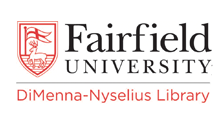Racial Segregation and Voter Turnout in Urban America
Document Type
Article
Publication Date
1998
Abstract
This study examines the effect of hypersegregation on turnout in recent elections in Bridgeport, Connecticut and Baltimore, Maryland. A Geographical Information System (GIS) is used to assign to each registered voter in both cities his or her census block group via geocoding The individual-level voting data are then aggregated up to the block group level and merged with a subset of block group-level 1990 census variables A set of statistical analyses are next performed to measure the contextual effect of the racial composition of surrounding areas on voter turnout at the block group level The results show that after controlling for income, racially homogeneous block groups (Black or non-Black) situated in surrounding areas that mirror their own racial composition have significantly higher levels of political participation than corresponding block groups situated in surrounding areas that do not reflect their racial composition .
Publication Title
American Politics Research
Repository Citation
Schlichting, Kurt; Tuckel, Peter; and Maisel, Richard, "Racial Segregation and Voter Turnout in Urban America" (1998). Sociology & Anthropology Faculty Publications. 99.
https://digitalcommons.fairfield.edu/sociologyandanthropology-facultypubs/99
Published Citation
Kurt Schlichting, Peter Tuckel, Richard Maisel (April 1998) “Racial Segregation and Voter Turnout in Urban America” American Politics Research, 26 (2), pp. 218-236. doi:10.1177/1532673X9802600205.
DOI
10.1177/1532673X9802600205


Comments
Copyright 1998 Sage
A link to full text has been provided for authorized users.